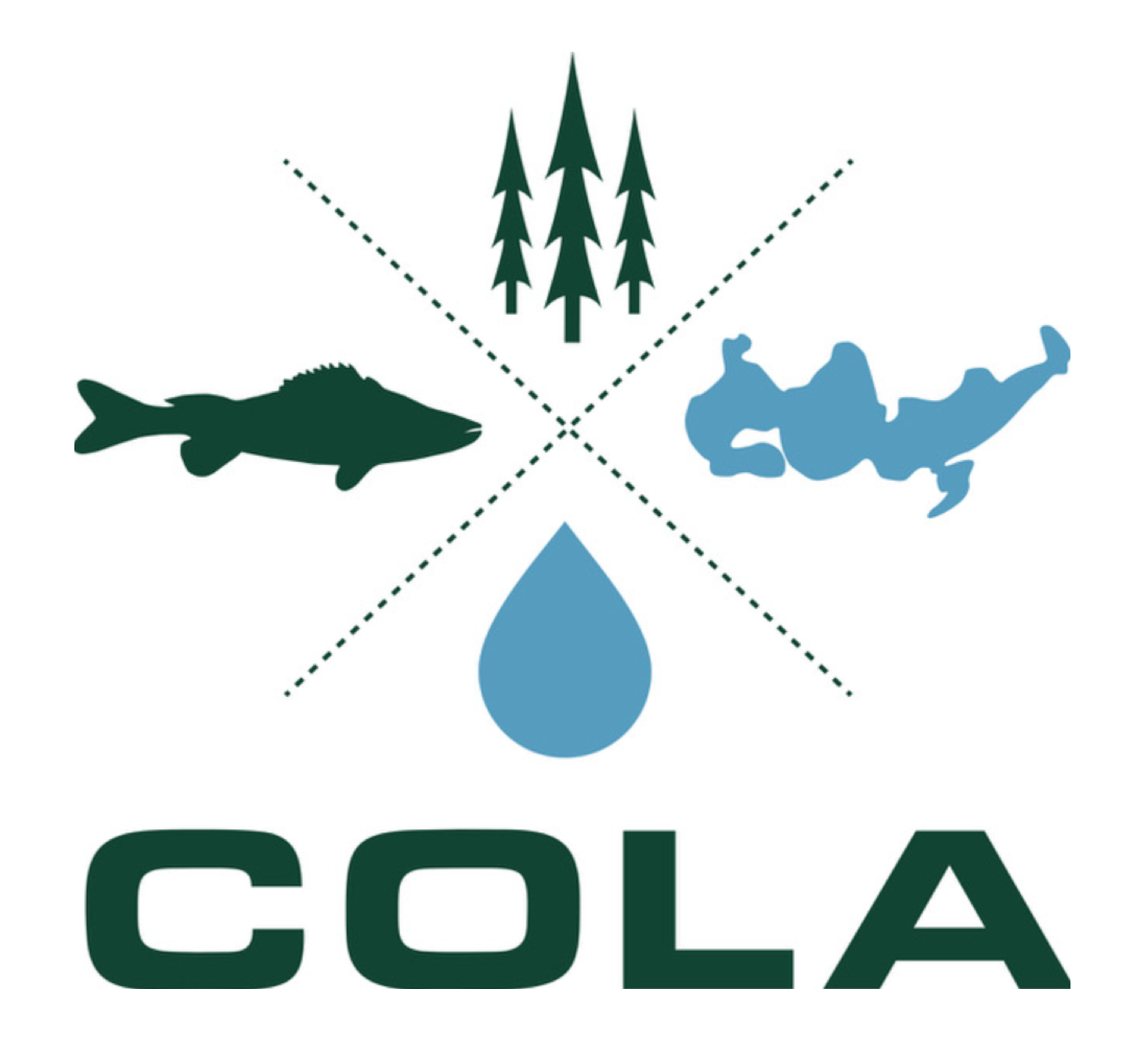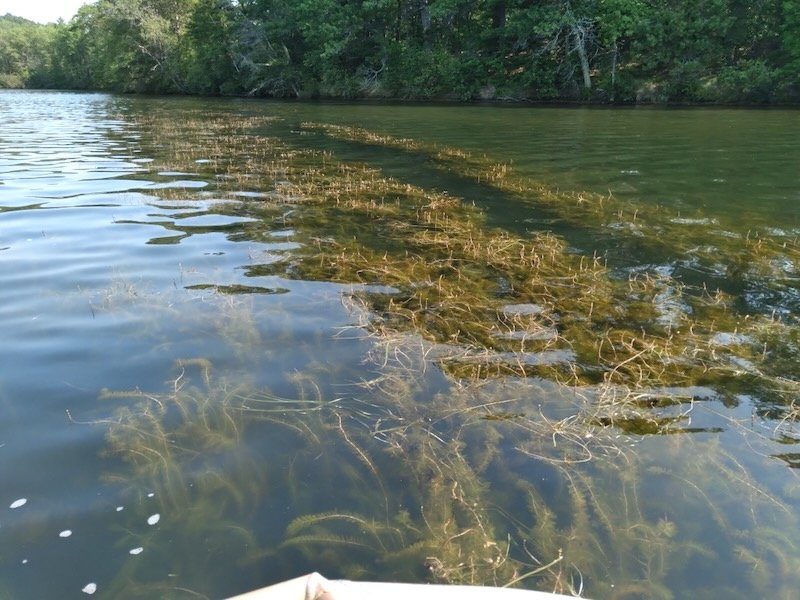PRESERVING THE LEGACY OF LAC COURTE OREILLES
STATE OF THE LAKES, FALL 2021
KEVIN HORROCKS, COLA PRESIDENT
“I’ve seen more plants, in bigger, thicker patches than ever.”
“Plants are growing in places I’ve never seen them before.”
“There are piles of weeds on our shoreline.”
“This is worse than we’ve ever seen it.”
There is no way to sugar coat the dire state of Lac Courte Oreilles (both Big LCO and Little LCO). Phosphorus pollution has caused an extraordinary, unprecedented surge in aquatic plant growth – primarily invasives – in Lac Courte Oreilles. People who have been on the lake for decades, including conservation professionals who monitor the lake, have never seen aquatic plant masses as bad. The legacy of Lac Courte Oreilles – its exceptional water quality is deteriorating rapidly. A massive effort – both financially and with volunteer work – by everyone on the lakes is necessary to halt the deterioration. Without that effort, your fondest memories of Lac Courte Oreilles will be just that – memories, and what you see below will be the norm.
Eurasian watermilfoil (EWM) after EcoHarvester removed one strip (left). A recreational boat passing through this patch of EWM will spread it (right).
Throughout the summer, COLA and LCO Tribal Conservation worked to address the problem. Using the new EcoHarvester, COLA and the Tribe aggressively attacked curly-leaf pondweed (CLP), an invasive aquatic plant that starts growing in early summer before most other aquatic plants start growing and removed hundreds of pounds from known sites in Barbertown Bay, Swedens Bar, along the south shore at the east end of Lac Courte Oreilles, and in Musky Bay. As summer progressed, COLA and the Tribe were stunned by the explosion of Eurasian watermilfoil (EWM), another invasive, first in Little LCO and then in Big LCO. The crew of the EcoHarvester, working several full days along with three satellite boats, removed the worst of the EWM in Little LCO. While more days could have been spent in Little LCO, the crew had to move on to Big LCO because Barbertown Bay, Anchor Bay, Chicago Bay, Moccasin Bar, Stuckey Bay, and the West Basin had all developed large, multiple, thick patches of EWM in areas where there had never been any. By the time COLA and the Tribe got to these areas the EWM was already creating problems for boats and swimmers, and clumps of detached EWM were clinging to docks and washing up on shore.
Apart from the invasives, native aquatic plants are expanding at alarming rates throughout Lac Courte Oreilles, with some of the plants showing up in areas where they have not been seen before. Legally, COLA cannot remove or treat native plants, only invasives.
Pulled EWM transferred to trailer to haul away.
EcoHarvester about to start removal of EWM.
The cause of the explosion of these aquatic plants and algae is excessive phosphorus in Lac Courte Oreilles. Phosphorus feeds plants like EWM that grow into thick patches that form mats on the surface of the water. When motorboats, or even canoes, kayaks, or rowboats go through these patches, the EWM is torn apart, and the fragments, which are capable of rooting into new plants, continue to spread. In the fall these plant masses die. The decay adds more phosphorus to the water and sediment and consumes dissolved oxygen, which leads to fish kills. In the spring the whole cycle begins and repeats itself.
It has become painfully clear to COLA that the proliferation of these invasive aquatic plants may be outpacing the work of the volunteer crew of the EcoHarvester. To get ahead of and control the aquatic invasive plants, COLA may have to consider, on an interim basis, utilizing some new, but highly effective aquatic herbicides. In addition to on-the-lake-work to control invasives, COLA is purchasing Internet Landing Installed Device Sensors (I-LIDS) for the main Chicago Bay public landing and considering the Victory Heights and Anchor Bay landings as well to provide 24/7 video inspection of boats coming in and out of the lake. The I-LIDS have proved highly effective on other lakes to help control the spread of invasive species. The cost of the I-LIDS is $12,000 apiece.
The combined cost of controlling invasive plants and the ongoing scientific work to protect the water quality of the lakes from phosphorus pollution will be in the tens of thousands of dollars. Each of us has a stake in maintaining the water quality of Lac Courte Oreilles. It is imperative that everyone become a Partner in protecting the lakes by contributing money for COLA’s operations. Just the minimal donation of $100 from the approximate 650 property owners on the lake would generate $65,000. So please consider the following levels of support:
Sustaining Partner - $100 to $999
Defending Partner - $1,000 up to $4,999
Protecting Partner - $5,000 up to $9,999
Guardian of the Legacy - $10,000 and Greater
All you need to do is click on:
If you are interested in recurring monthly donations or making a stock donation contact COLA’s treasurer at treasurercola@gmail.com to make arrangements.
Yes, we need the financial resources to save Lac Courte Oreilles. But beyond the finances, we all must make individual efforts to Preserve the Legacy of Lac Courte Oreilles. For example, establish a natural shoreline buffer. A riprap shoreline or green lawn to the lake is no substitute for a natural shoreline made up of native vegetation that intercepts nutrients and reduces runoff, erosion, and sedimentation. A natural shoreline sustains fish and wildlife and protects the entire lake. (See, Natural Buffers and Lakescaping). Maintain an appropriate distance from the shore when power boating to eliminate wave damage to shorelines. Learn to identify aquatic invasive plant species and report your findings to COLA so COLA can take appropriate action to remove the invasives. Adhere to the Sawyer County Shoreland – Wetland Protection Ordinance for construction projects. The ordinance is designed to protect lake water quality. Volunteer to assist with COLA’s projects. Attend a COLA board meeting to learn more about COLA’s work or contact any officer or board member. Board meetings are held the fourth Friday of every month from 3 to 5 pm at the Bass Lake Town Hall.
Lac Courte Oreilles belongs to all of us. Some of us have long histories here. Others are recent owners. But all of us are on the lakes because they are special, rare in quality, and important to us. We owe it to ourselves to help protect them.
Sincerely,
Kevin Horrocks
President, Lac Courte Oreilles Lakes Association, Inc.





